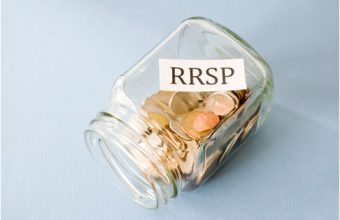It’s getting kinda late to set up financial strategies that will have a tax-saving or other impact for 2015, but it’s definitely not too late to set yourself up to start 2016 on the right foot. There are a number of things you can look to before the year is out, including deductible payments, tax-loss selling, portfolio rebalancing, and RRSP maturity options. Here are four things you can do before the new year to get ready for a fresh, financially savvy start to 2016.
1. Deductible payments
A number of payments that you can make before year-end will give you a tax benefit for 2015. These include charitable donations and investment-related expenses used to earn income, like interest payments on money borrowed for investment purposes, investment counselling fees, even safe-deposit box rental fees.
Also, you can make any necessary medical or dental payments for items not covered by provincial health plans. These include such things as glasses, prescription drugs, and hearing aids. Pay before year-end and you can add them to your medical expense deduction for the year.
2. Tax-loss selling
If you’ve lost money on investment assets in your portfolio, consider selling before year-end if you wish to use losses to offset any gains you might have made earlier in the year on other investments. To qualify for a 2015 tax loss, the settlement of the transaction must take place in 2015.
Because it takes three business days to settle a transaction, the last possible day to sell securities to be eligible for a capital loss for the 2015 tax year is Dec. 24 for settlement by Dec. 31, 2015. (This year, Canadian markets are closed Dec. 25 to Dec. 28 inclusive.) For U.S. exchange-traded stocks, different rules apply, and you may have another day’s leeway. But check with your broker or advisor now, while you still have time, to be absolutely sure you can meet the various transaction deadlines.
3. Rebalance portfolios
Throughout the year, as markets fluctuate, assets in your portfolio will gain or lose value, and by the end of the year may have skewed your asset weightings. Perhaps a 50/50 fixed-income/equity split in your balanced portfolio at the start of the year has become a 40/60 split or even a 30/70 fixed-income/equity split at the end of the year. The net effect is that your overall portfolio risk has grown considerably, because your portfolio is now overweighted to stocks, which are considered riskier than fixed-income. If left unattended, this can have a serious impact on your portfolio performance during the next bout of stock market volatility.
So year-end is a great time to review your asset weightings with your advisor, with a view to normalizing allocations and diversification. Trim or switch where necessary, using capital losses to offset gains where available. Don’t forget to apply any unused losses carried forward from previous years.
4. RRSP maturity options
You must collapse your RRSP by the end of the year in which you turn 71. If you haven’t already done so, there are only a couple of weeks left to make some key decisions about the disposition of your RRSP. And you have three choices for what to do with the funds. You can take the entire amount into income (not very tax-effective if the RRSP is one of those big million-dollar ones), purchase an annuity, or convert your RRSP into a Registered Retirement Income Fund (RRIF). Or, what most people in your situation do is to build some combination of these choices to maximize income, security, and tax efficiency.
- The RRIF alternative. This is a popular choice for many RRSP holders, because a RRIF is much like an RRSP in that investments in the plan continue to grow sheltered from tax. However, you must withdraw a minimum amount from the RRIF every year. That income then becomes taxable at your top marginal rate in the year of withdrawal. The annual minimum withdrawal is calculated by multiplying the market value of your RRSP account on December 31 of the previous year by a percentage pre-set by the government.
- An annuity contract is designed to provide a guaranteed income stream. Putting it very simply, when you purchase an annuity, you essentially buy an insurance contract under which the issuing company invests the lump sum you provide and guarantees a regular payout over the life of the annuity contract. There are several types of annuities, and these can be complex products. It’s important to understand how interest rates and other factors affect how much income you will receive.
- ‘Pensionizing’ retirement income can be done with an insurance product that offers a guaranteed income withdrawal feature. This product is similar to an annuity in that it guarantees a specific regular monthly, quarterly, or annual payment until you pass away. But unlike an annuity, you can take the ‘cash surrender value’ if your situation changes dramatically (but this is not recommended).
If you’re looking to make last-minute year-end planning decisions that involve larger assets or investments, or decisions that may lock you into contracts like annuities, definitely get the advice of a qualified financial professional first.
Tagged under: finance,saving,Money,tax
Category: family-finance






